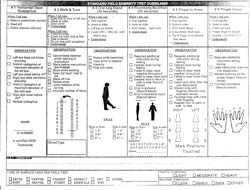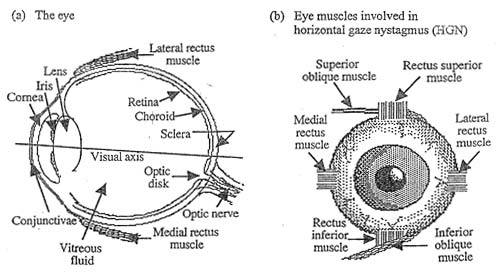|
This is the arrest process in a typical DUI case but as some cases may be
different the following may not apply in your DUI case.
- Observing The Vehicle In Motion - The Stop
The police officer needs to witness a traffic violation or have reasonable suspicion
that you have committed a crime in order to make a traffic stop. The police officer
will look for behavior that involves slowed reactions, a willingness to unreasonable
risks and impaired vision actions. The following are initial visual behaviors police
officers use to detect nighttime DUI drivers:
The Visual Detection of DWI Motorists by National Highway Traffic Safety Administration
(NHTSA), for the following:
- Weaving
- Weaving across lane lines
- Straddling a lane line
- Drifting
- Swerving
- Almost striking a vehicle or other object
- Turning with a wide radius, or drifting during a curve
- Stopping problems (too far, too short, too jerky)
- Accelerating for no reason
- Varying speed
- Slow speed
- Driving without headlights at night
- Failure to signal a turn or lane change, or Signaling inconsistently with actions
- Driving in opposing lanes or the wrong way on a one-way street
- Slow response to traffic signals
- Slow or failure to respond to officer's signals
- Stopping in the lane for no apparent reason
- Following too closely
- Improper or unsafe lane change
- Illegal or improper turn (too fast, jerky, sharp, etc.)
- Driving on other than the designated roadway
- Stopping inappropriately in response to an officer
- Inappropriate or unusual behavior
- Appearing to be impaired.
- Personal Contact
The police officer is also trained to look for certain face-to-face behavior
while talking with a driver, such as the following:
- Bloodshot eyes
- Soiled clothing
- Fumbling fingers when producing documents
- Alcohol containers in plain view in vehicle
- Slurred speech when talking to driver
- Admission of drinking
- Odor of alcohol beverages from the breath of driver
Then the police officer will also observe how the driver exits the vehicle or if
the driver uses the door for support, stumbles, sways while walking, or grabs for
support.
The Field Sobriety Tests
There are field sobriety tests (FSTs) and a portable breath test (PBT) device
that police officers usually use to gather evidence against you for a DUI
charge. These are called psychophysical tests that employ the concept of divided
attention tasks that require you to concentrate on 2 things at once.
Field Sobriety Test Guidlines (PDF)

The following are the most commonly used by police officers.
Horizontal Gaze Nystagmus
The police officer will instruct you to stand with your feet together and your
arms at your side. The police officer will state I am going to check your eyes,
now keep your head still and following this with your eyes, do not move your eyes
back to center until I tell you, do you understand? During this test the officer
is looking to see:
- Right eye onset before 45 degrees
- Right eye has distinct nystagmus at maximum deviation
- Right eye does not follow smoothly
- Left eye onset before 45 degrees
- Left eye has distinct nystagmus at maximum deviation
- Left eye does not follow smoothly

Walk & Turn
The police officer with instruct you to put your left foot on the line and then
place your right foot in front of it. When I tell you to begin take 9 heel to toe
steps down the line, turn around and take 9 heel to toe steps back, when you turn
you must pivot so that either the ball or the heel of one foot remains on the line,
keep you hands to your sides, watch you feet at all times and count your steps out
loud. During this test, the officer is looking to grade you on the following:
- Cannot balance during instructions
- Starts too soon
- Stops while walking
- Does not touch heel-to-toe
- Steps off line
- Uses arms to balance
- Loses balance on turn or turns incorrectly
- Takes wrong number of steps
One Leg Stand
The officer will instruct you to stand with your feet together
and your arms at your side. When I tell you to stand with your feet together and your
arms down at your sides when I tell you to I want you to raise one leg about six inches
off the ground and hold that position look at that foot. At the same time count for
30 seconds in the following manner, 1001, 1002, 1003 etc. Do you understand? During
this test, the officer is looking to grade you on the following:
- Sways while balancing
- Uses arms to balance
- Hopping
- Puts foot down
Conditions
Police officers should provide appropriate conditions before requesting you
perform these tests and where proper instructions and demonstrations are conducted. There
can be situations were there is a language barrier; the lighting was insufficient,
and/or the testing surface was rocky or otherwise uneven. Additionally, NHTSA states
these FST tests should not be given in the following situations if the suspect:
- Is 50 pounds or more overweight
- Is 65 years of age or older
- Has any back, hip, leg, knee, or ankle injuries
- Has any disability effecting balance
- Is wearing shoes with heels two (2) inches or higher
The Portable Breath Test
The police officer may ask you to blow into a handheld device called a portable
breath test (PBT). This is to strengthen the police officer's arrest by giving
an approximate reading of how much alcohol is in your body. The device can be
used as evidence of probable cause to make an arrest and basis for impounding
your vehicle.
The Arrest
Based upon the observations of your driving, your behavior while talking with you,
your performance of the FSTs, and the PBT reading, the police officer may have probable
cause that you committed a DUI. Once the police officer believes there is probable
cause, you will be placed in handcuffs and put in the back seat of the patrol car
to be transported for a breath or blood alcohol concentration testing.
Top of Page
|
ALL INFORMATION IS CONFIDENTIAL
Our Office
(602) 476-9669 |



